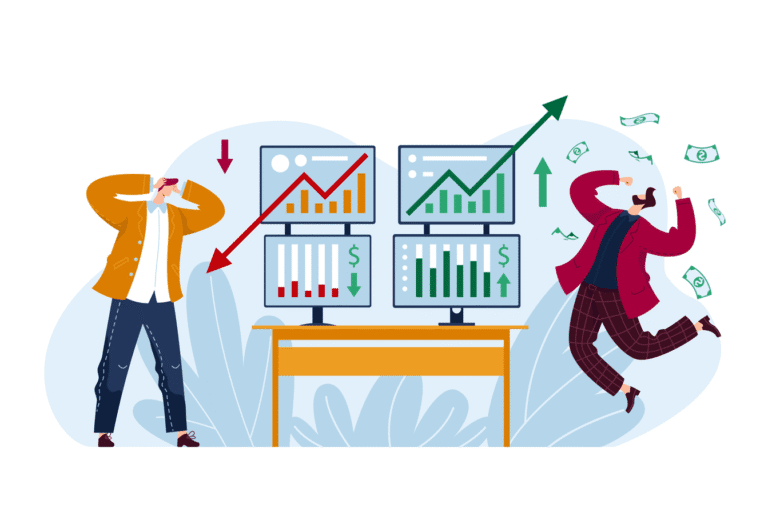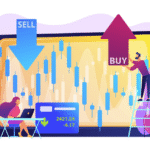Mastering Risk Management in Forex Trading
Mastering Risk Management in Forex is the foundation of every successful trader’s journey. While strategies and indicators can guide your entries and exits, it’s your risk management plan that determines whether you stay profitable in the long run. Markets will always be uncertain, but your preparation doesn’t have to be.

Why Risk Management Matters in Forex?
Protecting Your Capital Comes First
Forex trading offers massive opportunities but with high reward comes high risk. That’s why Mastering Risk Management in Forex is essential for long-term success. Many traders focus too heavily on profits and strategies without planning how to protect their capital. However, risk management should always be your first priority before opening any position.
By effectively managing risk, you reduce the impact of losses, preserve your account balance, and trade more confidently. Forex markets are highly volatile and react quickly to news, economic data, and global events. Without a proper plan in place, even one bad trade could wipe out days, even weeks, of gains. Smart traders don’t just aim to win trades; they aim to stay in the game.
Trading Without Risk Rules is Gambling
Think of forex trading like running a business. No business would survive without budgeting or forecasting risks. Likewise, a trader who doesn’t manage risk is not investing, they’re gambling. Using risk management tools such as stop-loss orders, take-profit levels, and proper lot sizing can make a significant difference in outcomes.
Additionally, when traders understand and accept risk as part of the process, emotions like fear and greed become easier to control. This emotional discipline is just as critical as technical skills. After all, the market doesn’t owe anyone profits as it rewards those who plan and prepare.
Key Principles of Risk Management Every Trader Should Follow
Never Risk More Than You Can Afford to Lose
One of the golden rules in Mastering Risk Management in Forex is to only risk a small percentage of your capital per trade ideally 1% to 2%. This rule ensures that even after several losses, your account remains intact and you stay in the game. Many traders fall into the trap of “revenge trading” after a loss, increasing their trade size in hopes of a quick rebound. This often leads to even bigger losses.
Moreover, setting realistic expectations helps avoid overtrading. Consistent small wins add up over time. Chasing big profits with oversized trades usually results in emotional decision-making and account blowouts. Your number one job as a trader is to survive and grow, not to hit home runs with every trade.
Leverage is a Double-Edged Sword
Leverage can magnify profits, but it also increases risk. New traders often misuse leverage, believing it guarantees bigger gains. In truth, high leverage exposes your capital to higher volatility and increases the chance of margin calls. Always assess how much leverage you’re using and match it with your risk tolerance.
Using low leverage paired with tight risk management strategies might seem slow at first, but it’s far more sustainable. A disciplined approach allows your account to grow steadily without exposing you to unnecessary danger.
Tools and Techniques for Effective Risk Control
Use Stop-Loss and Take-Profit Orders Consistently
One of the best tools for Mastering Risk Management in Forex is the stop-loss order. It sets a predefined price where your trade will close if the market moves against you. This simple tool ensures that losses are limited and calculated. Similarly, a take-profit order locks in your gains once your target is met.
It’s easy to forget or skip these tools in the excitement of live trading. However, skipping them is like driving without brakes. No matter how skilled you are, unexpected events can shake the market. A news release or central bank announcement can quickly turn a winning position into a loss if you’re not protected.
Keep a Trading Journal and Track Performance
Keeping a detailed trading journal helps you spot patterns in both your successes and failures. Record every trade’s entry, exit, reason, and outcome. Over time, you’ll gain insight into what works best for your strategy and where you need improvement.
Risk management isn’t just about controlling loss, it’s about learning from them. A journal helps you stay objective and avoid emotional decisions. Traders who document and review their performance continuously evolve and improve their edge in the market.
Start small, use proper tools, manage leverage wisely, and track your trades with discipline. By taking control of your risk, you also take control of your confidence. Remember, consistency in protecting your capital is more powerful than chasing fast profits.
In the end, trading success isn’t about avoiding losses, it’s about surviving them and continuing to trade smarter every day.

What is Lorem Ipsum?
Lorem Ipsum is simply dummy text of the printing and typesetting industry. Lorem Ipsum has been the industry’s standard dummy text ever since the 1500s,
How to Read Forex Charts Like a Pro
How to Read Forex Charts Like a Pro Forex charts are the foundation of every trader’s decision-making process. These charts visually display currency price movements

CFD Trading Explained: What It Is and How It Works
CFD Trading Explained: What It Is and How It Works Contracts for Difference, more commonly known as CFD Trading, represent a modern way of engaging
SmarTrade Featured in Manila Standard for Bringing Back Exclusive Trading Seminar to Manila
SmarTrade Featured in Manila Standard for Bringing Back Exclusive Trading Seminar to Manila SmarTrade has once again proven its leadership in financial education as it

Forex Broker: How to Choose the Right One
Choose the right Forex broker for your trading journey with essential tips and insights to enhance your trading experience and success.

Emotional Trading: How to Stay Calm and Collected
Discover the impact of emotional trading and learn strategies to maintain calmness and clarity in your trading decisions.
